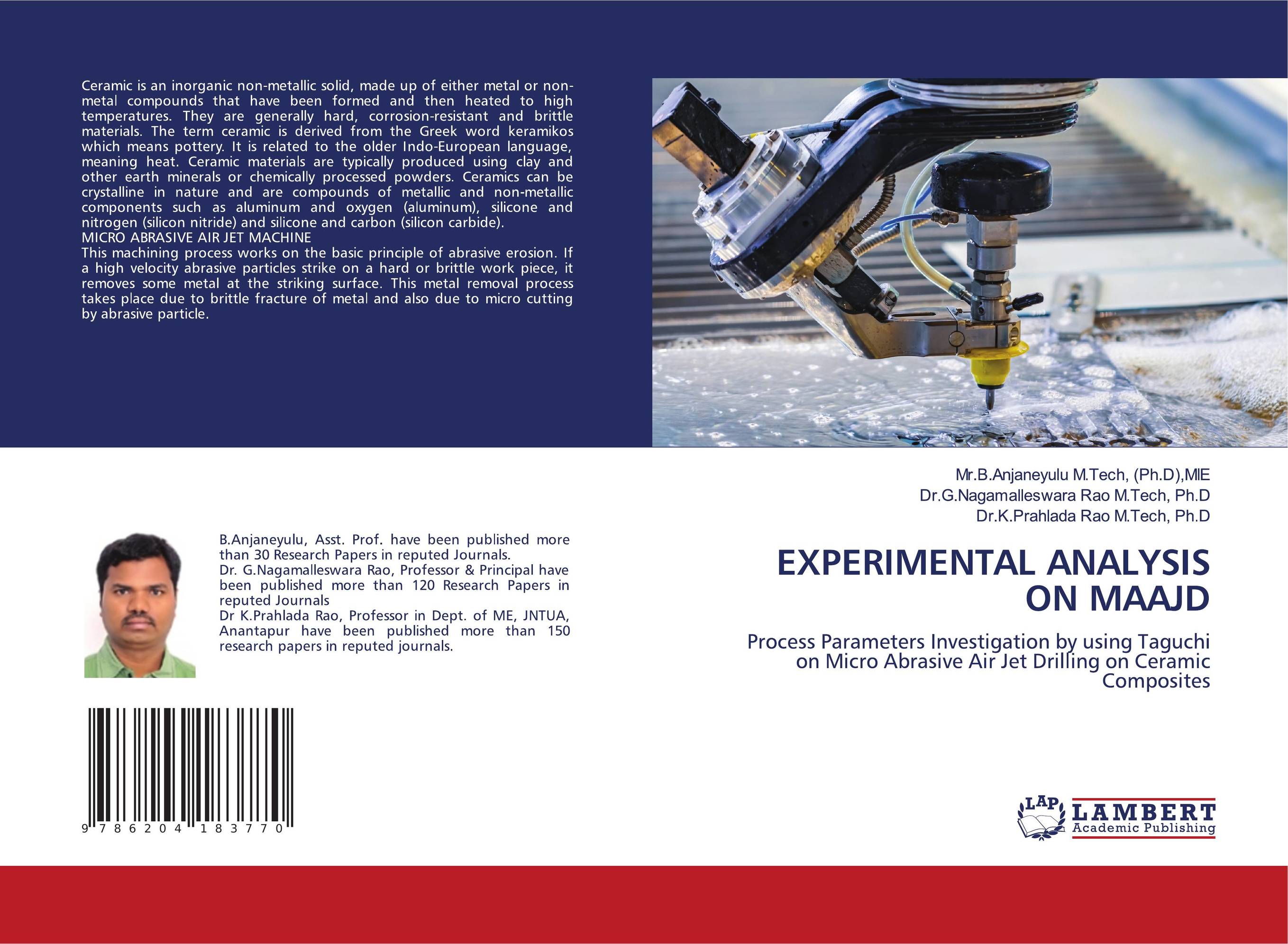| Поиск по каталогу |
|
(строгое соответствие)
|
- Профессиональная
- Научно-популярная
- Художественная
- Публицистика
- Детская
- Искусство
- Хобби, семья, дом
- Спорт
- Путеводители
- Блокноты, тетради, открытки
EXPERIMENTAL ANALYSIS ON MAAJD. Process Parameters Investigation by using Taguchi on Micro Abrasive Air Jet Drilling on Ceramic Composites

В наличии
| Местонахождение: Алматы | Состояние экземпляра: новый |

Бумажная
версия
версия
Автор: Mr.B.Anjaneyulu M.Tech, (Ph.D),MIE,Dr.G.Nagamalleswara Rao M.Tech, Ph.D and Dr.K.Prahlada Rao M.Tech, Ph.D
ISBN: 9786204183770
Год издания: 1905
Формат книги: 60×90/16 (145×215 мм)
Количество страниц: 64
Издательство: LAP LAMBERT Academic Publishing
Цена: 23350 тг
Положить в корзину
| Способы доставки в город Алматы * комплектация (срок до отгрузки) не более 2 рабочих дней |
| Самовывоз из города Алматы (пункты самовывоза партнёра CDEK) |
| Курьерская доставка CDEK из города Москва |
| Доставка Почтой России из города Москва |
Аннотация: Ceramic is an inorganic non-metallic solid, made up of either metal or non-metal compounds that have been formed and then heated to high temperatures. They are generally hard, corrosion-resistant and brittle materials. The term ceramic is derived from the Greek word keramikos which means pottery. It is related to the older Indo-European language, meaning heat. Ceramic materials are typically produced using clay and other earth minerals or chemically processed powders. Ceramics can be crystalline in nature and are compounds of metallic and non-metallic components such as aluminum and oxygen (aluminum), silicone and nitrogen (silicon nitride) and silicone and carbon (silicon carbide).MICRO ABRASIVE AIR JET MACHINEThis machining process works on the basic principle of abrasive erosion. If a high velocity abrasive particles strike on a hard or brittle work piece, it removes some metal at the striking surface. This metal removal process takes place due to brittle fracture of metal and also due to micro cutting by abrasive particle.
Ключевые слова: Ceramic materials, Taguchi, ANOVA



